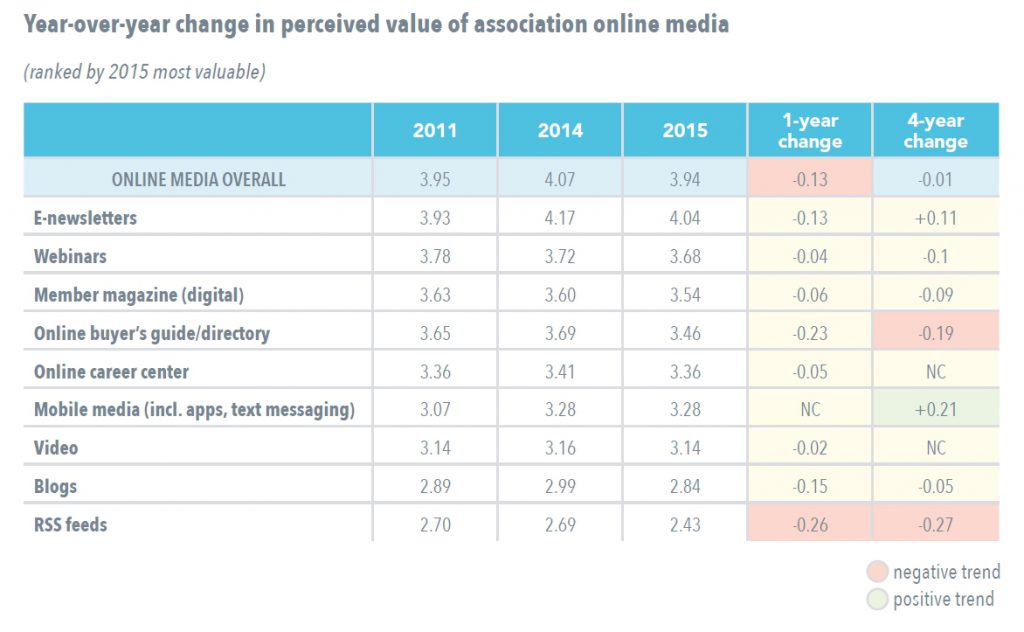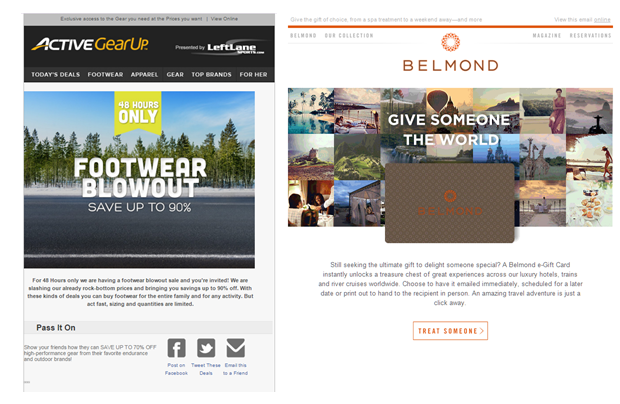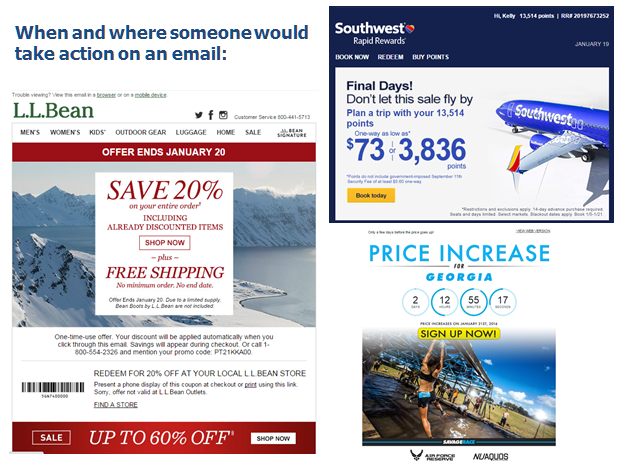6 Steps to a Better Email Marketing Strategy

When was the last time you checked on the progress of your email marketing strategy?
Email has become so ubiquitous that most people approach email marketing with an attitude of, “Everyone uses email, so whatever I send to my recipients is bound to work.”
It’s true that an overwhelming majority of American adults (91 percent) like to receive promotional emails from organizations with which they do business (Marketing Sherpa, 2015). It’s also true that 72 percent of American adults say they prefer organizations to communicate with them via email over any other channel.

![]()
Look to your organization’s overall goals as a blueprint for your email marketing strategy.
Email marketing strategy: Start with one simple goal and get very specific about how to achieve it.
Don’t try to accomplish too many things in one email. Be clear about what recipients should do.
Unfortunately, because everyone uses email, the only emails that end up standing out to recipients are those that are extremely well-designed and personally relevant. The rest end up deleted or in junk folders, or don’t even make it past the internet service provider’s filters.
“But we don’t have a graphic designer on staff, and we can’t predict when our emails will be extremely relevant,” you may be saying. ”We can’t afford a fancy designer. We don’t have the time to research what makes any given email personally relevant to our members.”
Maybe so. But if your association has an organizational goal – which it very likely does – you can establish an informed email marketing strategy that yields those well-planned, well-designed emails everyone wants to open.
Think for a moment: What are some of your association’s goals this year? Maybe you want to increase membership by 10 percent. Maybe you want to enroll more people in your certification classes. Maybe you want more attendees at your annual event to rate it as one that can’t be missed.
Start with a BIG goal
Your association should be using your organization-wide goals to drive your email marketing strategy. Think of your association’s goals and objectives as a road map that can guide your email marketing strategy.
Let’s take one big goal your association has for 2016 and make it more specific so that an email marketing plan can help you achieve it. It could be anything you’ve been planning. Boost your membership roll by 15 percent. Increase renewals. Reduce overhead costs. Drive more traffic to your site or your mobile app. Enroll more people in a certain course or certification program. This goal should be somewhat broad, but more specific than, “Be awesome.” That is a given.
6 Steps to Refine Your Email Goal:
- Define your ultimate goal for your emails.
- Define your target audience.
- Determine why someone takes action on your email.
- Determine how people will find out about your offer.
- Determine when members will find out about your offer.
- Establish where your members can act on your email.
Step 1: Define your ultimate goal for your emails.
It’s not enough to say, “I want to increase event attendance by 15 percent.” Which event? If you try to increase everything, you’ll probably spread yourself too thin. Your goal should require just one call-to-action, so the end user knows exactly what to do without feeling overwhelmed. With few exceptions, stuffing an email chock full of info about everything will turn readers off. People skim email. They want to check it quickly while they are in line at the supermarket, or waiting in the carpool line, or out for lunch.
Does your goal focus on just one product, service or other aspect of your association? If not, take a moment to revise your goal to focus on just one item or concept.

Step 2: Define your target audience
Who uses the product or service, or interacts with your business concept that you named in your goal? Probably not your entire membership.
Here’s an example: I like to eat at Chick-fil-A. But I hate breakfast foods, so when I eat at Chick-fil-A, it’s always for lunch or dinner. It would not be an effective use of Chick-fil-A’s time and energy to send me emails about their breakfast foods and deals. No matter how many messages they send me, I’m not going to eat there for breakfast. But they can send me coupons or information about their chicken sandwiches because I like their lunch and dinner menu.

You can target potential targets of your product or service, but at some point you will need to find out if you’re emailing people who will actually participate, attend or enroll at some point.
Step 3: Determine why someone takes action on your email.
People buy stuff because they really need it, or they feel they need it. Your members will only take action on your emails if your emails contain a clear offer. Put another way, it’s not enough to say, “You should really do this!” to get a member to follow through.
What should your offer be? Do some simple research to find out what kinds of calls-to-action will get someone to pay dues, volunteer their time, enroll in a course or whatever you count as a conversion. This could be as easy as asking people who come to your next event why they came, and keeping track of respondents’ answers. Does a certain reason for attending (or not attending every year) keep coming up? Do people constantly ask about a certain benefit your association offers?

Going back to my affinity for Chick-fil-A, if they were to ask me why I eat there, I’d say, “I love the lemonade and the relaxing atmosphere.” So if I were Chick-fil-A’s entire customer base and they were to tailor an offer to me, they might create a campaign that talks about the benefits of taking a break in a relaxing atmosphere with a cool glass of lemonade and includes an offer for half-off a lemonade after 3 p.m. on weekdays.
Ideally, your offer would be just as specific as that, but for now, think of a basic offer you could center an email campaign around. What can you offer members to get them to convert, and propel you toward your overall goal?
Step 4: Determine how people will find out about your offer.
We’re talking about email here, so in this context email will be how members find out. But you need to decide the frequency of your emails about this offer. This leads us to:
Step 5: Determine when members will find out about your offer.
The timing of your email(s) in a campaign should be based on a few things:
- Your manpower – someone has to write, design and send the emails, and respond to any replies.
- The length of time your offer stands: Can you use email to create a sense of urgency, or does your product or service require careful thought before it’s purchased? Sometimes, an offer can simply be more information or an invitation to a free event.
- Your resources: There’s no right or wrong email format, but there are formats that are easier to produce. Do you use an email service provider? They often provide mobile-friendly layouts and graphics that make sending an email efficient. Do you have the bandwidth to send thousands or hundreds of thousands of emails per week or month?

Another consideration: Do you have the capacity to serve everyone who receives your offer all at once? Unless your goal is to get more conversions during a certain season or by a deadline, you may need to stagger the timing of who receives your email.
Step 6: Establish where your members can act on your email.
Establishing a goal with a place in mind helps you to clarify the steps your members must take to redeem the offer and help you achieve your association goal. Once they read about the action you want them to take, where do they go next? To your website? To your next member meeting? Name a place, and tell your members how to get there so they can act on the information you just sent them.
Establishing a place also helps you create goal-driven offers that drive your members to the most convenient place for conversions. For example, through research, you might realize that people register for events in higher numbers when someone who attended last year’s event gives their testimony about the value of the event. Your members actually tend to register when they hear a trusted peer give their recommendation. So you would make “Ask past attendees to give their testimony about the event in writing so we can include it in our email content” part of your goal.
End goal
At the end of this process, you should have a goal that focuses on one product or service that one target audience is likely to use/participate. You should know why someone would take action toward your association’s goal, how they will find out about the action they should take and when and where they will take the action. All of these elements, formalized in your goal, will not only guide your strategic thinking about the series of emails you send members about this goal, but will also guide your members toward taking action that helps you achieve your goal.
Don’t leave email marketing to chance
Goals help ensure that your association is using time and resources wisely, but also that your members know what to do when you email them. Don’t leave your email marketing to chance. Use these six steps to establish a solid goal for your email marketing that informs your email strategy and turns your association into a smart email marketer.
Kelly Clark is the manager for online marketing at Naylor Association Solutions.

